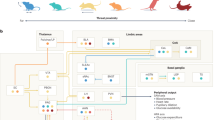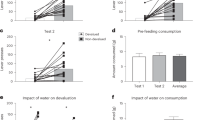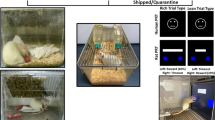Abstract
The tendency for some individuals to partake in high-risk behaviors (eg, substance abuse, gambling, risky sexual activities) is a matter of great public health concern, yet the characteristics and neural bases of this vulnerability are largely unknown. Recent work shows that this susceptibility can be partially predicted by laboratory measures of reward seeking under risk, including the Balloon Analog Risk Task. Rats were trained to respond on two levers: one of which (the ‘add lever’) increased the size of a potential food reward and a second (the ‘cash-out lever’) that led to delivery of accrued reward. Crucially, each add-lever response was also associated with a risk that the trial would fail and no reward would be delivered. The relative probabilities that each add-lever press would lead to an addition food pellet or to trial failure (risk) were orthogonally varied. Rats exhibited a pattern of responding characteristic of incentive motivation and risk aversion, with a subset of rats showing traits of high-risk taking and/or suboptimal responding. Neural inactivation studies suggest that the orbitofrontal cortex supports greater reward seeking in the presence or absence of risk, whereas the medial prefrontal cortex is required for optimization of patterns of responding. These findings provide new information about the neural circuitry of decision making under risk and reveal new insights into the biological determinants of risk-taking behaviors that may be useful in developing biomarkers of vulnerability.
Similar content being viewed by others
Log in or create a free account to read this content
Gain free access to this article, as well as selected content from this journal and more on nature.com
or
References
Acheson A, de Wit H (2008). Bupropion improves attention but does not affect impulsive behavior in healthy young adults. Exp Clin Psychopharmacol 16: 113–123.
Acton GS (2003). Measurement of impulsivity in a hierarchical model of personality traits: implications for substance use. Subst Use Misuse 38: 67–83.
Aklin WM, Lejuez CW, Zvolensky MJ, Kahler CW, Gwadz M (2005). Evaluation of behavioral measures of risk taking propensity with inner city adolescents. Behav Res Ther 43: 215–228.
Anokhin AP, Golosheykin S, Grant J, Heath AC (2009). Heritability of risk-taking in adolescence: a longitudinal twin study. Twin Res Hum Genet 12: 366–371.
Berendse HW, Galis-de Graaf Y, Groenewegen HJ (1992). Topographical organization and relationship with ventral striatal compartments of prefrontal corticostriatal projections in the rat. J Comp Neurol 316: 314–347.
Bickel WK, Miller ML, Yi R, Kowal BP, Lindquist DM, Pitcock JA (2007). Behavioral and neuroeconomics of drug addiction: competing neural systems and temporal discounting processes. Drug Alcohol Depend 90 (Suppl 1): S85–S91.
Bornovalova MA, Cashman-Rolls A, O’Donnell JM, Ettinger K, Richards JB, deWit H et al (2009). Risk taking differences on a behavioral task as a function of potential reward/loss magnitude and individual differences in impulsivity and sensation seeking. Pharmacol Biochem Behav 93: 258–262.
Brown VJ, Bowman EM (2002). Rodent models of prefrontal cortical function. Trends Neurosci 25: 340–343.
Cools R, Sheridan M, Jacobs E, D’Esposito M (2007). Impulsive personality predicts dopamine-dependent changes in frontostriatal activity during component processes of working memory. J Neurosci 27: 5506–5514.
Crowley MJ, Wu J, Crutcher C, Bailey CA, Lejuez CW, Mayes LC (2009). Risk-taking and the feedback negativity response to loss among at-risk adolescents. Dev Neurosci 31: 137–148.
Dalley JW, Mar AC, Economidou D, Robbins TW (2008). Neurobehavioral mechanisms of impulsivity: fronto-striatal systems and functional neurochemistry. Pharmacol Biochem Behav 90: 250–260.
Dalley JW, Fryer TD, Brichard L, Robinson ES, Theobald DE, Laane K et al (2007). Nucleus accumbens D2/3 receptors predict trait impulsivity and cocaine reinforcement. Science 315: 1267–1270.
Daughters SB, Reynolds EK, MacPherson L, Kahler CW, Danielson CK, Zvolensky M et al (2009). Distress tolerance and early adolescent externalizing and internalizing symptoms: the moderating role of gender and ethnicity. Behav Res Ther 47: 198–205.
Floresco SB, St Onge JR, Ghods-Sharifi S, Winstanley CA (2008). Cortico-limbic-striatal circuits subserving different forms of cost-benefit decision making. Cogn Affect Behav Neurosci 8: 375–389.
Forbes EE, Brown SM, Kimak M, Ferrell RE, Manuck SB, Hariri AR (2009). Genetic variation in components of dopamine neurotransmission impacts ventral striatal reactivity associated with impulsivity. Mol Psychiatry 14: 60–70.
Goto Y, Grace AA (2005). Dopaminergic modulation of limbic and cortical drive of nucleus accumbens in goal-directed behavior. Nat Neurosci 8: 805–812.
Goto Y, Grace AA (2008). Limbic and cortical information processing in the nucleus accumbens. Trends Neurosci 31: 552–558.
Gruber AJ, Hussain RJ, O’Donnell P (2009). The nucleus accumbens: a switchboard for goal-directed behaviors. PLoS One 4: e5062.
Hamidovic A, Kang UJ, de Wit H (2008). Effects of low to moderate acute doses of pramipexole on impulsivity and cognition in healthy volunteers. J Clin Psychopharmacol 28: 45–51.
Hare TA, Camerer CF, Rangel A (2009). Self-control in decision-making involves modulation of the vmPFC valuation system. Science 324: 646–648.
Hunt MK, Hopko DR, Bare R, Lejuez CW, Robinson EV (2005). Construct validity of the Balloon Analog Risk Task (BART): associations with psychopathy and impulsivity. Assessment 12: 416–428.
James AS, Groman SM, Seu E, Jorgensen M, Fairbanks LA, Jentsch JD (2007). Dimensions of impulsivity are associated with poor spatial working memory performance in monkeys. J Neurosci 27: 14358–14364.
Kathleen Holmes M, Bearden CE, Barguil M, Fonseca M, Serap Monkul E, Nery FG et al (2009). Conceptualizing impulsivity and risk taking in bipolar disorder: importance of history of alcohol abuse. Bipolar Disord 11: 33–40.
Lejuez CW, Aklin W, Daughters S, Zvolensky M, Kahler C, Gwadz M (2007). Reliability and validity of the youth version of the Balloon Analogue Risk Task (BART-Y) in the assessment of risk-taking behavior among inner-city adolescents. J Clin Child Adolesc Psychol 36: 106–111.
Lejuez CW, Aklin WM, Zvolensky MJ, Pedulla CM (2003). Evaluation of the Balloon Analogue Risk Task (BART) as a predictor of adolescent real-world risk-taking behaviours. J Adolesc 26: 475–479.
Lejuez CW, Read JP, Kahler CW, Richards JB, Ramsey SE, Stuart GL et al (2002). Evaluation of a behavioral measure of risk taking: the Balloon Analogue Risk Task (BART). J Exp Psychol Appl 8: 75–84.
Lighthall NR, Mather M, Gorlick MA (2009). Acute stress increases sex differences in risk seeking in the balloon analogue risk task. PLoS One 4: e6002.
Llewellyn DJ (2008). The psychology of risk taking: toward the integration of psychometric and neuropsychological paradigms. Am J Psychol 121: 363–376.
Mar AC, Robbins TW (2007). Delay discounting and impulsive choice in the rat. Curr Protoc Neurosci Chapter 8: Unit 8.22.
Patton JH, Stanford MS, Barratt ES (1995). Factor structure of the Barratt impulsiveness scale. J Clin Psychol 51: 768–774.
Platt ML, Huettel SA (2008). Risky business: the neuroeconomics of decision making under uncertainty. Nat Neurosci 11: 398–403.
Preuss TM (1995). Do rats have prefrontal cortex? The Rose-Woolsey-Akert program reconsidered. J Cogn Neurosci 7: 1–24.
Rao H, Korczykowski M, Pluta J, Hoang A, Detre JA (2008). Neural correlates of voluntary and involuntary risk taking in the human brain: an fMRI Study of the Balloon Analog Risk Task (BART). Neuroimage 42: 902–910.
Rivalan M, Ahmed SH, Dellu-Hagedorn F (2009). Risk-prone individuals prefer the wrong options on a rat version of the iowa gambling task. Biol Psychiatry 66: 743–749.
Schilman EA, Uylings HB, Galis-de Graaf Y, Joel D, Groenewegen HJ (2008). The orbital cortex in rats topographically projects to central parts of the caudate-putamen complex. Neurosci Lett 432: 40–45.
Sesack SR, Grace AA (2010). Cortico-basal ganglia reward network: microcircuitry. Neuropsychopharmacology 35: 27–47.
Sesack SR, Pickel VM (1992). Prefrontal cortical efferents in the rat synapse on unlabeled neuronal targets of catecholamine terminals in the nucleus accumbens septi and on dopamine neurons in the ventral tegmental area. J Comp Neurol 320: 145–160.
St Onge JR, Floresco SB (2009). Prefrontal cortical contribution to risk-based decision making. Cereb Cortex (in press).
Trepel C, Fox CR, Poldrack RA (2005). Prospect theory on the brain? Toward a cognitive neuroscience of decision under risk. Brain Res Cogn Brain Res 23: 34–50.
Tversky A, Kahneman D (1981). The framing of decisions and the psychology of choice. Science 211: 453–458.
van den Bos R, Lasthuis W, den Heijer E, van der Harst J, Spruijt B (2006). Toward a rodent model of the Iowa gambling task. Behav Res Methods 38: 470–478.
Walton ME, Kennerley SW, Bannerman DM, Phillips PE, Rushworth MF (2006). Weighing up the benefits of work: behavioral and neural analyses of effort-related decision making. Neural Netw 19: 1302–1314.
Weber E, Blais A, Betz N (2002). A domain-specific risk-attitude scale: measuring risk perceptions and risk behaviors. J Behav Decis Mak 15: 263–290.
White TL, Lejuez CW, de Wit H (2007). Personality and gender differences in effects of d-amphetamine on risk taking. Exp Clin Psychopharmacol 15: 599–609.
White TL, Lejuez CW, de Wit H (2008). Test-retest characteristics of the Balloon Analogue Risk Task (BART). Exp Clin Psychopharmacol 16: 565–570.
Wilhelm CJ, Mitchell SH (2008). Rats bred for high alcohol drinking are more sensitive to delayed and probabilistic outcomes. Genes Brain Behav 7: 705–713.
Winstanley CA, Dalley JW, Theobald DE, Robbins TW (2004). Fractionating impulsivity: contrasting effects of central 5-HT depletion on different measures of impulsive behavior. Neuropsychopharmacology 29: 1331–1343.
Zacny JP, de Wit H (2009). The prescription opioid, oxycodone, does not alter behavioral measures of impulsivity in healthy volunteers. Pharmacol Biochem Behav 94: 108–113.
Zald DH, Cowan RL, Riccardi P, Baldwin RM, Ansari MS, Li R et al (2008). Midbrain dopamine receptor availability is inversely associated with novelty-seeking traits in humans. J Neurosci 28: 14372–14378.
Zeeb FD, Robbins TW, Winstanley CA (2009). Serotonergic and dopaminergic modulation of gambling behavior as assessed using a novel rat gambling task. Neuropsychopharmacology 34: 2329–2343.
Zuckerman M, Eysenck S, Eysenck HJ (1978). Sensation seeking in England and America: cross-cultural, age, and sex comparisons. J Consult Clin Psychol 46: 139–149.
Acknowledgements
These studies were supported by Public Health Service grants P20-DA022539, P50-MH077248, and RL1-MH083270, and by Philip Morris USA. We gratefully acknowledge the advice and input of Drs Edythe London, Adriana Galvan, and Russell Poldrack.
Author information
Authors and Affiliations
Corresponding author
Ethics declarations
Competing interests
The authors declare no conflict of interest.
Rights and permissions
About this article
Cite this article
Jentsch, J., Woods, J., Groman, S. et al. Behavioral Characteristics and Neural Mechanisms Mediating Performance in a Rodent Version of the Balloon Analog Risk Task. Neuropsychopharmacol 35, 1797–1806 (2010). https://doi.org/10.1038/npp.2010.47
Received:
Revised:
Accepted:
Published:
Issue date:
DOI: https://doi.org/10.1038/npp.2010.47
Keywords
This article is cited by
-
Uncovering the structure of self-regulation through data-driven ontology discovery
Nature Communications (2019)
-
Neurons in rat orbitofrontal cortex and medial prefrontal cortex exhibit distinct responses in reward and strategy-update in a risk-based decision-making task
Metabolic Brain Disease (2019)
-
Extending the Balloon Analogue Risk Task to Assess Naturalistic Risk Taking via a Mobile Platform
Journal of Psychopathology and Behavioral Assessment (2018)
-
Risk should be objectively defined: comment on Pelé and Sueur
Animal Cognition (2014)
-
Greater risk sensitivity of dorsolateral prefrontal cortex in young smokers than in nonsmokers
Psychopharmacology (2013)



